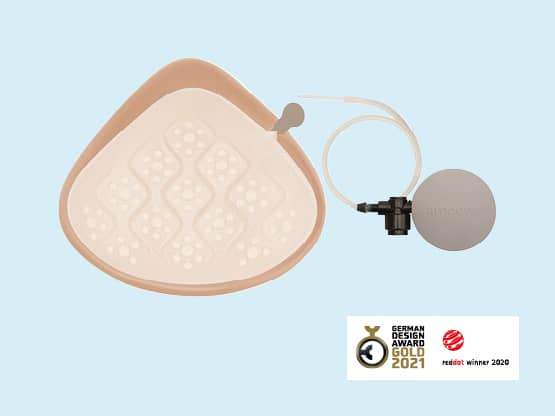Evidence Says Exercise Lowers Your Risk of Cancer
We take a close look at the science of why fitness activity is good for everyone
 It’s safe to say that society has accepted the body-mind-spirit connection, especially in times of stress and illness. Research is firmly behind the idea that one of the keys to all three is to take care of the first: the body. Scientists are now trying to determine specific ways that exercise improves the risks associated with cancer– before, during and after diagnosis.
It’s safe to say that society has accepted the body-mind-spirit connection, especially in times of stress and illness. Research is firmly behind the idea that one of the keys to all three is to take care of the first: the body. Scientists are now trying to determine specific ways that exercise improves the risks associated with cancer– before, during and after diagnosis.
Early first menses, late menopause, breast density, age at first childbirth, family history of the disease. There are so many risk factors for breast cancer that are completely out of our control. It feels like there’s nothing much that women can do to avoid initial diagnosis or recurrence of the disease.
But that’s not quite the case. “There are things we can do each and every day to reduce the risk of breast cancer, to improve chances ofn ot dying from breast cancer, and to decrease the risk of recurrence,” says Colleen Doyle, MS, RD, Director of Nutrition and Physical Activity at the American Cancer Society.
Ironically, it turns out that one of the best things women can do to preserve their health goes against the wisdom of decades. For years, oncologists, surgeons, and other healthcare professionals have told women during and after cancer treatment to take it easy, rest, relax. Focus on getting well and catch up on your reading.
 But it turns out that one of the best ways to focus on getting well is to get up off that sofa and engage in regular physical activity.
But it turns out that one of the best ways to focus on getting well is to get up off that sofa and engage in regular physical activity.
Let’s get physical – and statistical
People who exercise are less likely to get breast cancer than those who are less physically active, says Jennifer Ligibel, MD, medical oncologist at Boston’s Dana Farber Cancer Institute. Specifically, women who are physically active on a regular basis are between 25 and 30 percent less likely to be diagnosed with breast cancer, according to Ligibel.
A study at the German Cancer Research Center (Deutsches Krebsforschungazentrum) in Heidelberg, led by Drs. Karen Steindorf and Jenny Chang-Claude, found that there are some things women can do to lower their risk of breast cancer. Specifically, the researchers found that 19.4 percent of invasive postmenopausal breast cancers are attributed to hormone replacement therapy and 12.8 percent to a lack of physical activity. Combined, these two factors explain nearly a third of breast cancer cases, say the investigators.“That means that two factors which each woman has in her own hands are responsible for a similar number of postmenopausal breast cancer cases as the non-modifiable factors,” notes Steindorf.
Another study, published in 2007 by Dr. Leslie Bernstein of the University of Southern California, found that women who exercised strenuously for five hours a week lowered their risk of invasive breast cancer, particularly of estrogen receptor-negative invasive breast cancer, when compared with women who were less active.
The challenge with these studies (and most others that have been completed to date) is that they are observational; none are randomized, observes Ligibel. As a result, it is possible that women who are already doing better – the ones who are in better health, who are eating better, and who are more conscientious about taking their medicines – may be the ones reporting their results to the researchers. “We cannot prove a causal relationship based on these studies,” says Ligibel, though there is clearly a relationship between physical activity and improved rates of survivorship.
But the accumulated data are meaningful. In fact, Doyle notes that the American Cancer Society has been publishing articles about the importance of physical activity since the year 2000. “But now the data are strong enough to call our recommendations‘Guidelines,’” Doyle adds, which is a big step.
Of course, exercise is not completely protective, Ligibel notes. “Marathon runners get breast cancer, too,” she says. But it can make a big difference – and it is one of the few concrete steps that women can take to improve their health.
Exercise is good for overall health, notes Doyle. It can improve cardiovascular fitness, muscle strength, bone health and body composition and can also play a role in weight loss, which has its own benefits. Regular physical activity can also improve the quality of life, by decreasing levels of stress, anxiety and depression and improving self-esteem, Doyle adds. “It may seem counter-intuitive,” says Doyle, “but exercise can also lessen fatigue.”
“Regular physical activity is good for everyone,” says Ligibel. “But there is good evidence that exercise is especially helpful for cancer survivors, especially breast, colon, and prostate cancer.”
When to Start and What to Do
 “Today is the best time to start to exercise. There is no point at which exercise cannot help prevent breast cancer from starting in the first place or from recurring,” says Ligibel. Exercise before treatment begins, during treatment, and after treatment are all linked to a decrease in recurrence.
“Today is the best time to start to exercise. There is no point at which exercise cannot help prevent breast cancer from starting in the first place or from recurring,” says Ligibel. Exercise before treatment begins, during treatment, and after treatment are all linked to a decrease in recurrence.
In general, moderate exercise translates into a twenty-minute mile, says Ligibel, though the precise definition may vary from study to study. “These women are not marathoners,” she adds. “They spend three hours a week doing moderate walking.” That’s encouraging; exercise can help your life and prolong your life, but it needn’t completely take over your life.
Moderate physical activities, according to the American Cancer Society, are ones that you can perform while talking, but not while singing. They include a range of sports and daily activities, such as:
- ice and roller skating
- horseback riding
- yoga
- downhill skiing
- golf
- volleyball
- baseball
- badminton
- brisk walking
- mowing the lawn
- raking and trimming shrubs
- doing housework
Of course, there are many more examples. Both aerobic and strength/resistance training are important, according to the American Cancer Society guidelines. Most people who exercise focus on aerobic training and as a result, points out Ligibel, most studies likewise look primarily at aerobic exercise.
Resistance training, though, can be particularly helpful in improving bone health and density, muscle strength and flexibility. Studies show that weight training can decrease the incidence and severity of lymphedema, notes Doyle. Indeed, the American Cancer Society’s Nutrition and Physical Activity Guidelines for Cancer Survivors (2012) states that moderate resistance training during and after treatment can help survivors maintain lean muscle mass while avoiding excess body fat.
“Historically, women have been told to not do upper body weight training for fear of getting or worsening lymphedema,” says Doyle. But that is not the case. “Women do not have to be afraid of weight training.” In fact, according to the American Cancer Society, a number of studies have shown that this sort of physical activity is not only safe, but can actually reduce the incidence and severity of lymphedema. The American Cancer Society recommends progressive resistance training, working with a trained exercise therapist and using appropriate compression garments.
“It’s interesting,” says Ligibel,” that while more exercise is not bad, you get more bang for your buck with consistent, moderate physical activity.” While it rarely hurts to exercise more, says the medical oncologist and researcher, it is more helpful to perform consistent and moderate exercise – perhaps taking a good, brisk walk every day – than to run a marathon and then take a month off to rest.

“It doesn’t matter what you do,” says Ligibel. “You just need to get your heart rate up, sweat, and do at least ten to fifteen minutes of physical activity at a time.”
Maintaining the Ideal Weight
Obesity is also a concern. According to the American Cancer Society, there is a strong connection between being overweight or obese and an increased risk of many types of cancers, including breast cancer among postmenopausal women.
While it is best to achieve your optimal weight, the American Cancer Society says that it is helpful to simply avoid weight gain during treatment. And intentional weight loss following treatment may be associated with health benefits, even if you don’t reach your ideal weight, notes the organization in its Guidelines. Even losing just 5% or 10% of your weight can play a big role in avoiding recurrence.
Healthcare professionals determine a healthy weight for an individual by using the body mass index (BMI), which determines the ideal weight based on the person’s height. To check your own status, you can use the BMI calculator developed by the U.S Department of Health and Human Services’ National Institutes of Health.
Lab Lessons: How It Works
Now that researchers have determined that exercise can help prevent cancer, the question arises: how does this work?
One researcher, Lee Jones, Ph.D., Associate Professor at the Duke University Medical Center in Durham, NC, notes that most of the studies – the ones we’ve been talking about and others – are observational for a simple reason: It’s hard to conduct a controlled experiment with humans. We’re kind of difficult to control.
Jones, who has three appointments: Associate Professor of Radiation Oncology, Associate Professor of Pathology, and Associate Professor in Psychiatry and Behavioral Sciences, is conducting studies on mice to explore the relationship between exercise and tumor size. While the results are still preliminary, he has found that tumors grow 30 percent more slowly in female mice on an exercise routine than those that are sedentary. The exercise was all aerobic, not resistance-focused.
Jones is also finding that when female mice exercise while in treatment, particularly during chemotherapy, the treatment is more effective. “When mice exercise, it improves the delivery of chemotherapy to the tumors,” Jones explains. It does not, fortunately, affect the spread of chemo cocktails to healthy tissue; somehow the chemicals know just where to go.
“My personal bias, with the limited data,” says Jones, “is for women diagnosed to exercise as soon as possible. Pre-surgery, during therapy, the whole time. We know how bad doing nothing is. Exercising as soon as possible is the way to go.”
But no research method is perfect. The difficulty with studies in rats, says Ligibel, is that mice and people are different. People are more complex, she explains; we have more control over what and when we eat, for instance, than mice in a cage. As a result, it is difficult to generalize from studies in rats to behavior in human beings.
As a result, researchers have been trying to figure out what causes these improved outcomes in humans. “When people start to exercise,” says Ligibel, “the hormone levels that are linked to breast cancer change in a positive direction.” Specifically, insulin and estrogen levels decrease while levels of other hormones that are better when higher tend to increase.
Ligibel and colleagues at the Dana Farber Cancer Institute have shed some light on this phenomenon. Researchers measured insulin and blood glucose levels in 101 women, along with their weight, body composition and circumference of waist and hips. Half of the women performed a 16-week regimen of cardiovascular and strength training while the other half were left to their own devices. At the end of the experiment, the women who exercised had lowered their insulin measurements by an amount that approached statistical significance. In addition, the women who were more active reduced their hip circumference.
“Our findings suggest that the effects of exercise on breast cancer prognosis may be mediated, at least in part, through changes in insulin levels and/or changes in fat mass or deposition,” says Ligibel, who headed up the study. Additional studies are looking at changes at a cellular level, trying to determine how patients can decrease the rate of growth of cancer tumors. The results are still preliminary, though we will hopefully know more soon.
Another area that researchers are looking into is trying to determine the volume and type of exercise that is most effective in fighting cancer. “We want to be able to personalize exercise, just as we personalize chemotherapy” for the individual patient. In the meantime, Jones suggests women follow the American Cancer Society’s general recommendations on physical activity.
| "It doesn't matter what you do, you just need to get your heart rate up, sweat, and do at least ten to fifteen minutes of physical activity at a time." --Jennifer Ligibel, MD |
|---|
Caveat Exerciser
While exercise is important in decreasing cancer risk, you don’t want to run outside and start immediately with a ten-mile jog. Keep in mind any special considerations.
“Someone who’s not active at all should probably start with ten minutes of physical activity a few days a week,” says Ligibel. “It is important to set realistic goals and to work hard at meeting them.”
Doyle recommends taking into account how active you were before the cancer diagnosis as well as the type of cancer and treatment received. She recommends that you delay activity if you are anemic; wait until your iron levels rise. If you’re in radiation treatment, avoid chlorine as it might aggravate already sensitive skin. If you have a catheter or port, avoid resistance training in that part of the body (say, the upper body). And if you are experiencing extreme fatigue, don’t push yourself.
Patients should also be careful about where they exercise. Someone in chemotherapy who has a low white cell count should avoid public gyms and public pools. And someone who has had a bone marrow transplant should probably stay away from public places for about a year, says Doyle.
In addition, people who are older who have bone disease or significant impairments such as arthritis or neuropathy, it is important to focus on balance. You don’t want to fall. The American Cancer Society recommends, in these cases, that patients stick with a stationary reclining bicycle, for example, rather than walking on a treadmill.
Ultimately it boils down to this: If you are in treatment, do what you can do now and try to do more when you can do more. Just keep moving. As Doyle explains, the goal is to avoid inactivity. “Exercise has benefits all through treatment and afterwards. It’s an investment in a woman’s health and hopefully will prove to lower her risk of dying from breast cancer.”
This article was previously published in our Amoena Life magazine, the latest copy of which can be read online here. To make sure you hear about our new releases as soon as they're available, sign up for our e-newsletter.







